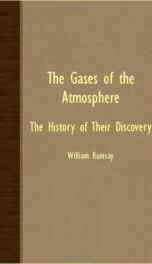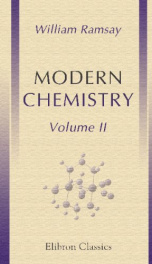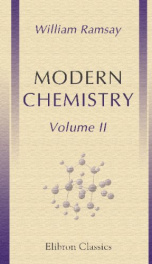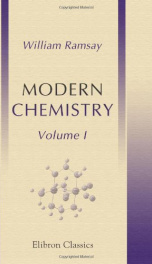elements and electrons

Purchase of this book includes free trial access to www.million-books.com where you can read more than a million books for free. This is an OCR edition with typos. Excerpt from book: CHAPTER III MOLECULAR WEIGHTS FROM Avogadro's Law, that equal volumes of gases at the same temperature and pressure contain the same number of molecules, it is possible to deduce the molecular weight of any compound which can be obtained in the state of gas. For it is very certain that a molecule of oxygen consists of two atoms ; and by taking the density of oxygen as 16, and comparing the density of any other gas on this standard, the molecular weight of that gas can be ascertained by doubling the figure obtained for the density. Certain substances, however, like sulphur, mentioned in last chapter, have more complicated molecules at low than at high temperatures. Another case is iodine, of which the atomic weight, deduced from the specific heat, and from the equivalent, is 127. At moderate temperatures, say 5ooC., its vapour-density is also 127; and from this it is concluded that its molecule, like those of oxygen and hydrogen, consists of two atoms. Victor Meyer, latej. Professor at£Heidel- berg, discovered that at 1700, under low pressure, the density is reduced to 63-5, half of 127; that can be interpreted only on the supposition that the molecules of I2 dissociate into molecules of I1 at that very high temperature ; as the temperature falls, re-combination occurs, and the molecule I2 is reproduced by union of molecules, or what is here the same, of atoms of I1. Sulphur and iodine are both " elements," or rather compounds of one atom with another, or with more than one other atom of the same kind. But instances of dissociation of compounds are not infrequent, where the products of dissociation differ from one another. Ammonium chloride is an instance of such a compound. Its formula is NH'Cl; it is a white salt, not unlike common salt, with a saline taste ; it is made...
Users who have this book
Users who want this book
What readers are saying
What do you think? Write your own comment on this book!
write a commentif you like elements and electrons try:
Do you want to read a book that interests you? It’s EASY!
Create an account and send a request for reading to other users on the Webpage of the book!









